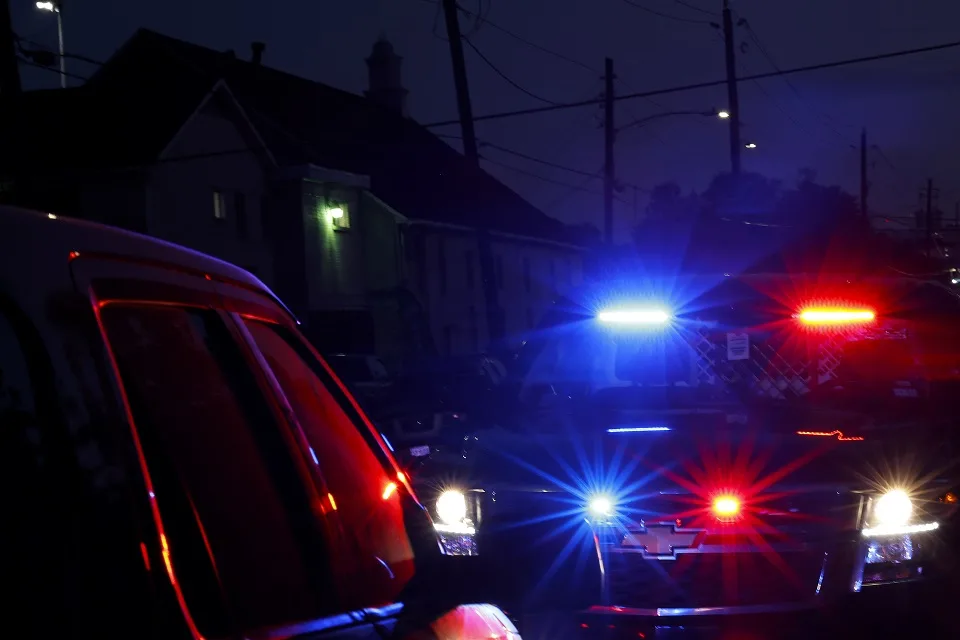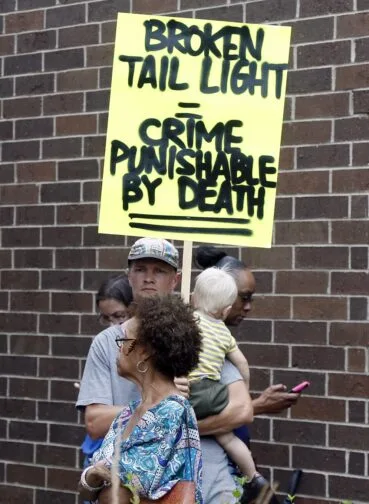
AP
ANN ARBOR, Mich.—During the Ann Arbor City Council meeting on June 20th, the Driving Equality Ordinance was given its first reading. However, there was not much to learn, as most Ann Arbor residents who spoke during public comment appeared to already be in the know about its provisions. To say these residents were in favor is to say the least about it.
The ordinance is meant to “curtail the practice of stopping vehicles for secondary traffic offenses as a pretext to investigate hunches that do not amount to reasonable suspicion that a crime occurred.” Not only did a number of Ann Arbor residents show up and call-in to ask that this ordinance be passed, the matter itself felt historically late.
Many related their own experiences of being stopped and searched by police for bogus reasons, while others pointed out how necessary this would be to put a safer distance between people and the police.
The ordinance would prevent cops from pulling over vehicles and detaining drivers for having a cracked windshield, loud exhaust, tinted windows, cracked tail lamps, having a misplaced registration sticker or temporary plate, or an expired registration of less than 60 days.
It appears the Driving Equality Ordinance is another necessary measure in the eyes of Ann Arbor residents, who also have been asking for policing alternatives in the city.
Ann Arbor has already taken ground-breaking steps toward a non-police response system—including a separate dispatch and unarmed responders—which the City Council passed a resolution on during the same meeting in June. The resolution is to issue an RFP for contracting with a third-party to build such an unarmed response program.
The driving ordinance appears to be another attempt at reducing police violence.
The Southeast Michigan Criminal Justice Policy Research Project at Eastern Michigan University, or SMART, was behind the research for the Driving Equality Ordinance. The study itself took two-and-a-half years to complete.
“Community-collaborative work was at the center of this study, which I think is a really essential element of this analysis and is one of the things that sets it apart from others,” Dr. Kevin Karpiak of SMART told People’s World.
“What I’m very proud of about SMART is its commitment to developing relationships and skills in the region. It’s about developing long term relationships with regional partners which allows for a longer timeline for such work.”
Karpiak, a professor at Eastern Michigan University, explained the significance of this relationship building:
“This is the most comprehensive and nuanced analysis of traffic stop data in the city of Ann Arbor. There are two things that stand out from this study: First, although it has taken two and a half years, this is one of its benefits. This study has been the product of community education, concerns, and input and collaborative work. The information on how stops and outcomes are entered into their database came from conversations with Ann Arbor police officers themselves. I would not have known that without that kind of collaboration.”
“Secondly, most other studies commissioned by municipalities are usually based on one year of traffic data. Our data spans three years—2017, 2018, and 2019 together. The benefit of that is that we have a lot more entries—a total of 34,631 stops that are a part of our analysis,” Karpiak said. “That allowed us to have a level of nuance to our analysis that could really target where the disparities are happening to a much greater degree than other reports could do.”
Karpiak added: “We were able to look at the frequency of stops, the reasons for the stops—equipment, traffic, and speeding violations—and we were also able to see if a search occurred.”
The sheer dimensions of the study are not as staggering as the findings, though.
“Our analysis identified significant disparities across every dimension examined with non-white motorists being stopped and searched more frequently and white motorists being stopped and searched less frequently than would be expected in every instance,” explained Karpiak.
“We found that the largest disparities identified in the analysis involved multi-racial and African American male drivers for stops initiated for equipment violations. Those occurred about 2.41 times more likely than would be expected if there were no disparities.”
Although such a disparity could hardly come as a surprise, this was not the only significant finding.
“The other element we found that had numbers that really stood out was that searches after the initial stop occurred between 3.65 and 5.4 times more often than would be expected for African American male drivers,” added Karpiak.
One of the most glaring points of these findings—the thing that seems to carry a lot of weight—is the singular word “expected.” What could “expected” possibly mean in such data analysis without suggesting some sort of ideological overtone?
“The challenge for all these analyses is that the real question often is ‘is such a percentage appropriate or not?’ The challenge is how do you determine what an appropriate number is,” explained Karpiak. “The instinctual response is to look at the census numbers for Ann Arbor to compare what percentage of Ann Arborites are African American and what percentage are stopped. However, this is not the best for traffic stops, because the population of the people being stopped in traffic are not necessarily the people who live in Ann Arbor, but the people who drive through Ann Arbor.”
So, how do we get a better estimation of the people who are driving through Ann Arbor?
“One of the most common ways is using traffic collisions to get an estimate of who is driving in Ann Arbor—what percentage are African American men, what percentage are Middle Eastern, and so on,” said Karpiak. “You compare that to the number of people being stopped and you can get an odds ratio.”
An odds ratio is, effectively, the expectant rate of a specific group of people represented in collisions to appear in traffic stop data.
“An odds ratio of one would mean the number of African Americans in collisions are exactly the same as African Americans in traffic stops,” clarified Karpiak. “So, when we say ‘2.41 times more likely than expected’ that means African American males are 2.41 times more likely to be stopped for equipment violations than in collisions.”
“It’s especially important for a city like Ann Arbor where so many people commute in,” implored Karpiak. “So many people are connected to Ann Arbor either through work, or driving through Ann Arbor, or live there but are not necessarily represented in the census data. There is so much the census data does not capture, and this gives us an understanding of who commutes through it regularly.”
SMART’s study is a bit of a novelty in that it was able to do things previous studies had not.
“Of the previous reports on traffic stop data, none of them cross-tabulated for race and gender at the same time,” explained Karpiak. “This allowed us to look for more specific trends and outcomes for specific groups of people and gave an important nuance to our data. Even though African Americans as a whole are stopped for equipment violations more often than expected, when we specifically look at African American men, we can see their rate is through the roof compared to even African American women.”
Karpiak added: “No other analysis was able to look at the reason for the stop either. Our finding that equipment violations represented particularly large disparities was not something a previous analysis was able to see.”

However, one of the limitations of this study was that it was not able to study what happened after the stop was initiated in depth. The problem stemming from the software that Ann Arbor’s police department, as well as many other municipalities in the nation, uses to enter in traffic stop data: The program only allows for a single choice for the outcome of a traffic stop.
“One of the things that we would have liked to do was to have more of an analysis on post-stop outcomes,” Karpiak explained.
“In most traffic stops, there’s more than one thing that comes out of that—it could involve multiple citations and a verbal warning, for example—Ann Arbor police had to pick one. Our initial assumption was that there was a hierarchy of which one would be chosen. If it ended in an arrest, the arrest would be the one they would choose which would still be problematic…but it turns out from having discussions with police leadership, there is no internal guideline for which outcome to enter. For example, a stop could involve multiple verbal warnings and an arrest, and could be entered as a verbal warning.”
According to Karpiak, this means that the number of arrests being reported cannot be considered an accurate representation of actual arrests in Ann Arbor. This is concerning because the outcome of the stop appears to be the most important part; however, there is work being done to focus on this very aspect.
A recent study using artificial intelligence and natural language processing modules to study thousands of hours of body cam footage found that the result of a traffic stop could be predicted after as little as the first 45 words spoken by the officer. The analysis found that stops resulting in escalation began with police using commanding language in their opening words to drivers. This kind of work is invaluable and goes a long way in justifying alternatives to policing and de-escalation methods.
“What happens after the stop is key because it’s the kind of thing that affects lives,” Karpiak emphasized. “Indeed, being stopped at disparate rates is problematic, but it’s what happens after that initial stop that really shapes lives. Is your car getting impounded, are you getting searched, are you going to get a citation – these kinds of things are what have cascading effects on people’s lives.”
Not only do the recent studies and legislation point to a clear divide between “protect” and “serve,” they have already begun to connect the two in radically new ways. SMART’s research even nods toward something new: Not only does such an ordinance concern itself with Ann Arbor residents but anyone passing through the city.
The study is available here. The Driving Equality Ordinance, meanwhile, had its second reading at the City Council meeting on July 6 and passed unanimously.
We hope you appreciated this article. At People’s World, we believe news and information should be free and accessible to all, but we need your help. Our journalism is free of corporate influence and paywalls because we are totally reader-supported. Only you, our readers and supporters, make this possible. If you enjoy reading People’s World and the stories we bring you, please support our work by donating or becoming a monthly sustainer today. Thank you!


